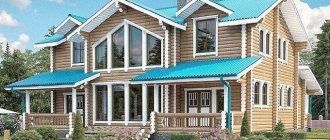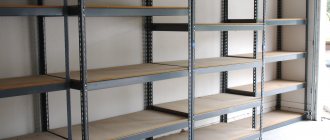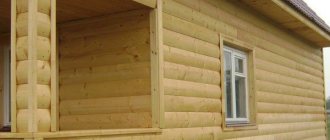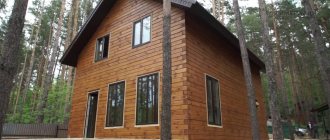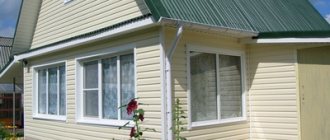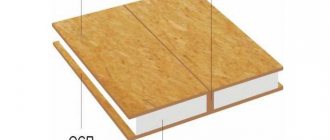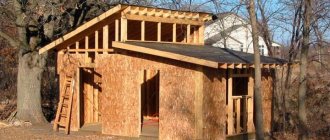Is it profitable?
Environmentally friendly materials are increasingly used in modern construction.
Wood is used in the construction of private farmsteads. Gazebos, bathhouses and even houses are built from logs. This material allows you to build not only housing that is most suitable for living, but also significantly saves the construction budget. Therefore, the production of rounded logs looks like a promising and profitable business. Register for a free marathon
How to create passive income in 4 days
A marathon where you will create passive income live from scratch and learn specific strategies for investing in apartments, houses, garages, cars and even profitable sites
Begin
Opening a wood processing workshop is quite simple. The technological process is simple and no special permits or licenses are needed. Workers may have low qualifications. One technologist who knows the process and knows how to control the operation of the equipment is enough. Such an enterprise will be profitable only when the volume of finished products is at least 250 cubic meters. per month. Log rounding is often complemented by other activities. Along with this business, it is best to carry out the construction of houses or small architectural forms made of wood. Large companies involved in the construction of such buildings often open their own production of materials.
A significant disadvantage of the business is its seasonality. Construction work usually stops with the onset of cold weather. That is why in winter it is necessary to find an alternative to income from cylindering logs.
Where to start producing log rounding
A log rounding workshop can be located in a production room, a hangar, or even just under a canopy. The equipment must be protected from the sun and precipitation. Wood blanks and the final products themselves are quite larger in size. The equipment for working with them is also impressive in size. This must be taken into account when choosing premises for production.
The workshop is subject to fire safety requirements. Floors and walls are finished with fireproof materials. The drying chamber is usually installed in a separate room. Blanks and finished products are stored separately. In addition, it is necessary to arrange office space for the administration.
Depending on the volume of production, you need to calculate the required number of workers. In one shift, 3-4 people can handle the rounding of logs at the site. From the administration you will need a director, an accountant and a sales manager.
Production of rounded logs
The rounded log has a round (or rounded) shape and is produced industrially. Modern enterprises use high-tech equipment, which ensures the production of very high quality products.
There is a similar article on this topic - Do-it-yourself sauna made from rounded logs.
Sometimes, in order to reduce the cost of building a house, you can round a log with your own hands: a lathe or a chain sawmill is adapted for this.
Factory-made logs go through all stages of processing. In addition to the actual shaping, this involves sawing logs by removing the top layer; the material is treated with special protective compounds and impregnations that improve performance and appearance. But first, the process of drying the wood occurs and its moisture level is brought to natural parameters of 23–26%.
Then the log is processed, after which it has a smooth surface, even ends and the correct cylinder shape, usually 6 meters long, although products are also produced 4 meters long.
On some products, bowls are additionally prepared for a certain type of joining , grooves, ridges, holes for connecting with dowels or tenons are made, or a complete set is made for a specific object.
Basically, the production of rounded logs is carried out from coniferous wood, mainly pine, less often larch, and spruce is used for this extremely rarely. Manufacturers in their work are mainly guided by specifications, but at the same time almost all adhere to generally accepted parameters.
For construction, you can use rounded logs with a diameter from 160–180 mm to 280–320 mm. Naturally, the larger the diameter, the better the house’s ability to retain heat, so when choosing, you should take into account the climatic region, as well as the total area of the building.
For example, for a house with an area of up to 100–120 m2, you can use logs with a diameter of 180–230 mm, but for a cottage with an area of 150–200 m2 or more, material with a diameter of 260–280 mm is required.
In addition to its aesthetically attractive appearance, a log house made from rounded logs has an important advantage over the traditional one - thanks to the processing, a tighter fit of the crowns of each row to each other is ensured , which has a positive effect on the thermal insulation characteristics.
Photos of houses made of rounded logs:
photograph of a house made of rounded logs
photo of a log house made of rounded logs
How much profit does a company specializing in log rounding make?
Monthly expenses for a woodworking shop include:
- Rent (industrial premises and office).
- Staff salaries.
- Public utilities.
- Raw materials and consumables.
- Transport costs.
- Electricity.
- Advertising.
- Depreciation.
- Taxes.
- Administrative expenses.
An enterprise that processes 250-300 m3 per month spends 25 thousand dollars on all of the above purposes. At the same time, its monthly revenue is 30-34 thousand dollars, which means profit before tax is 5-9 thousand, and after settlements with by the state - 4-7.5 thousand dollars.
What financial investments do you need to make to open your own log rounding shop?
To open an enterprise with a capacity of 250-300 cubic meters. an amount of 80-120 thousand dollars per month is required. It includes: costs for registration and execution of all documents, rental of premises, purchase of equipment, office equipment and furniture, as well as the purchase of additional tools, carrying out repair work and installing a production line. In addition, do not forget that the enterprise will not immediately begin to make a profit. It will take at least 2-3 months until it reaches the level of self-sufficiency, and until that moment you will finance monthly expenses from your own sources.
Design of a wooden house made of logs
Rounded logs are a beautiful material and are in great demand among designers as a finishing material; it is not without reason that various types of block houses made of wood, vinyl and other materials are popular. But the final design of the walls, the method of finishing them, and what the interior of the house made of rounded logs will be like is decided by the owner. Therefore, if there is a need for this, then almost any finishing material can be used.
Most often, decorating walls involves the use of various stains and varnishes, which are used both to change the original color of the log and give it greater depth, and with a protective function. In this case, the interior remains wooden, and it sets the design style. This option is used for both facade and interior walls.
But it is quite acceptable to decorate a wooden house in modern styles, even high-tech is no exception.
For this purpose, sheets of plasterboard , with which all surfaces are sheathed.
And then the walls can be plastered, covered with wallpaper, covered with tiles or other decorative materials. But it should be noted that such finishing of a log house is relevant only for interior spaces.
As a finishing option, you can use various types of linings, siding , the installation of hinged ventilated facades is allowed, but in this case, first of all, issues of improving the operational characteristics of the house are resolved, rather than aesthetic ones. First of all, this relates to thermal insulation properties, since in this case it is possible to lay an additional layer of thermal insulation material.
Interior of a house made of rounded logs
It is more logical for the floors to be natural, but if the design of a wooden house made of logs inside involves the implementation of a modern interior design, then in this case the appropriate floor covering is selected, including linoleum and tiles .
Construction of houses from timber with your own hands. - there is more useful information here.
And in order to make a wooden house very cozy and warm, it is easy to make a “warm floor” . For a large cottage, even at the design stage, you can consider the possibility of installing a water-heated floor. And if it is needed only in a few rooms, then the best option is infrared film floors , which are absolutely safe to use and have high efficiency.
You will be interested in this article - External and internal decoration of a wooden house.
Ceiling decoration in a wooden house
If the interior supports a natural wooden style, then there can be two options for decorating the ceilings: use finishing materials made of wood, including leaving it in its original form, without any finishing, or install tension ones , which, despite their manufacturability, turn out to be very organic in this case.
In cases where there is a desire to visually increase the height of the ceilings, you can use the coffered type , which is characterized by the presence of a beam ceiling, including imitation of it, rosettes, patterns, etc. As a rule, this technique is relevant for a rustic style in the interior .
Naturally, plasterboard , which is used not only for cladding, but also for creating multi-tiered designer ceilings. In the future, it lends itself to almost any type of decoration: painting, wallpapering, decorative panels.
We can conclude that the construction of houses from rounded logs does not at all limit the design possibilities for its design, but, on the contrary, expands them.
In a country house, it is quite possible to use different types of design, for example, in the children's room and bedroom, make a more modern ergonomic design, and in the living room, dining room and recreation room, leave it authentic. But in any case, wood, as the main material for building a house, will set the tone.
What equipment to choose for log rounding
There are three types of log rounding machines:
| Positional, turning type | The name of the machine speaks about the principle of its operation. It is in many ways similar to conventional turning equipment. The rounding of logs occurs while they rotate around their axis, and the cutting tool moves along the workpiece. The price of such an installation is within 200 thousand rubles. |
| Positional, with a stationary workpiece | The log is rounded by rigidly fixing the workpiece. The cutting tool moves along it. The cost of such a machine starts from 250 thousand rubles. |
| Machines with barrel feeding through a processing device | This equipment is highly productive. Its cost starts from 600 thousand rubles, but it pays off faster than others. |
Each of these types of machines has its own advantages and disadvantages. We will also show them in table form:
| Pass-through technology | |
| Advantages | Flaws |
| High processing speed due to continuous supply of workpieces. | The curvature of the source material is not removed during processing. To reduce its size, the workpiece is cut into pieces 1-2 m long. |
| Log rounding can be done in different lengths, without restrictions. | |
| Productivity – 35-40 cubic meters. m. for an 8-hour work shift. | |
| Possibility of additional wood processing: production of block houses, edged and decorative boards. | |
| Positional technology | |
| Advantages | Flaws |
| The ability to eliminate the initial curvature of the workpiece and produce a perfectly flat product. | The length of the workpiece cannot be greater than the dimensions of the machine itself. |
| Poor performance. More time is required to reconfigure the cutting tool. | |
| The need to attract qualified workers who can configure the installation. | |
All equipment can be mechanical, semi-automatic or automatic. Most often in workshops you can find the first type of machines. When choosing from a variety of offers from foreign and domestic manufacturers, you need to take into account two main parameters: productivity and quality of log rounding .
Stages of building a log house
Before you start building a house, you should prepare the site; you will also need to take care of a sufficient area for storing logs. And having data on the condition of the soil, you can choose the optimal type of foundation and get to work.
For construction, you can hire a construction team, but it is quite possible to build a house from a log with your own hands, although you still cannot do it without assistants and consultants.
Foundations for wooden houses
A wooden house, even a two-story one or with an attic, does not require a powerful foundation, and one-story houses made of rounded logs, in general, can be placed on a shallow strip or slab foundation .
In addition, depending on the type of soil and groundwater level, you can choose a pile or columnar option. And in order to eliminate possible mistakes, which will subsequently affect not only difficulties with the construction of the house, but also its reliability, markings for the foundation should be done very responsibly.
A wooden house can be built with a base, but its height must be at least half a meter and it is necessary to provide vents for ventilation. Or you can put the house on a grillage - this option for wood is very practical and affects its durability, but is used for pile or columnar types of foundation. Subsequently, the grillage is closed, creating an improvised base, or left open.
If you use screw piles for the foundation, then you can start building a house in early spring or even winter, then even finishing work can be completed by autumn. But it is better to give time for the structure to shrink, which in any case is inevitable and takes on average 1–3 years and depends both on the condition of the soil and on the quality of the material, especially its moisture content.
If the foundation is strip or slab, you need to give it time for the concrete to gain strength. And before you begin installing the first crown, you should perform high-quality waterproofing.
Construction of a log house from rounded logs
The first to be laid on the prepared foundation is the embedded crown or lower trim . It is preferable that it be made of larch, or at least aspen. Next, fixation is performed (with metal crutches or reinforcement) and waterproofing of the first crown. The most reliable way to protect it is to coat it with bitumen resin , and storm drains must be installed on top of the trim.
Installation of the next crowns is much faster, especially if logs with already prepared bowls are used for this.
In addition, if log houses are built from material made to order for a specific object or from a ready-made kit, then all logs in this case are numbered and they are installed taking into account their already determined location.
To fasten the crowns together, dowels or tenons are used, which are often made of birch, while a checkerboard order of their installation and a given step within the range of 1 to 2 meters are observed.
In order to avoid violations in geometry or turning out of logs in window and door openings, fastening with dowels in these areas is carried out in smaller increments - on average it is 0.5 m.
After each installed row of crowns, compliance with the horizontal and vertical levels is checked, and the coincidence of the diagonals is also checked.
For corner joints, like any wooden building, you can use different types of ties: “in the bowl”, “in the bowl”, “in the paw”, “with remainder” and “without remainder”, etc. The Canadian “bowl” is especially popular , representing a connection in the form of a cone, which guarantees the absence of cracks after shrinkage and has a beautiful aesthetic appearance “with remainder”.
Before proceeding with the installation of the next crown, insulation , for which it is recommended to use products of natural origin rather than synthetics. Most often jute, tow or hemp are used for this.
It is recommended to install doors and windows in a wooden log house after shrinkage , at least partial, no earlier than a year later. If it is not possible to wait such a period, then you should take into account the percentage of shrinkage and subsequently make an adjustment.
Installation of joists and ceilings
The construction of floors occurs using logs , which are installed on support beams fixed in special holes in one of a number of lower crowns, most often in the first. In this case, the supports can be placed on the foundation, which will prevent unnecessary load on the walls.
After the logs are laid, the subfloor is .
It is imperative that both support beams and logs be treated appropriately and have waterproofing, antipyrite and antiseptic impregnation.
The insertion of roof beams or ceilings between floors is similar to the installation of supports under the logs - for this purpose, grooves are cut out in two adjacent crowns. Most of the interfloor overlap is located in the upper crown - 80–90%, and the rest in the lower one. For support beams, a step of 50–60 cm is used, and for floors it can be somewhat larger; for roofing beams, 1–1.5 m is quite enough.
If the house has a terrace or balcony , then you cannot do without vertical beams. In this case, in order to avoid problems associated with shrinkage of the house, it is necessary to install rubber compensators , which will regulate the uniformity of shrinkage, taking into account the fact that vertical logs do not change their length and can “pull” the entire structure.
Roofing for a wooden house
Installing a roof on log houses is not much different from installing it on houses built from other materials, but there are still some nuances, primarily related to the characteristics of the load-bearing walls.
A conventional rafter system is used, which is attached to the walls, but on special sliding supports - metal elements that maintain the given roof slope even as a result of shrinkage of the house. For rafters, a step of half a meter is used.
Then the sheathing is performed and a layer of vapor and waterproofing is laid, and, if necessary, thermal insulation. A counter-lattice is mounted on top of this structure and you can begin covering the roof with the selected type of roofing material.
How to properly caulk walls
All log houses must be caulked inside and out, that is, using natural insulation, all joints between the crowns must be sealed. Caulking is carried out in two stages:
- first, immediately after the construction of the log house;
- the second time - after shrinkage occurs.
Like inter-crown insulation, caulk can be made of jute, hemp, tow or flax.
Materials for caulking walls should be:
- environmentally friendly and non-toxic;
- ensure high heat retention;
- show resistance to moisture and temperature changes;
- not serve as a habitat for various microorganisms;
- durable.
The most practical material is jute , which has the ability, due to the presence of natural resin in its composition, to retain its thermal insulation qualities for a long time, and also serve as a kind of protection against the appearance and progression of rotting processes.
There are two ways to caulk walls: “stretched” and “set”. In the first case, the caulking seems to stretch along the crowns, and in the second, it is “driven” into the space between the crowns.
Caulking is a very important stage in building a house from hand-cut logs, so it should be done carefully. If, trying to better insulate a house, you overdo it, then you can even get the problem of skew or uneven shrinkage of the building.
Preparation of necessary documents
If you plan to cooperate with government agencies, large woodworking companies or foreign companies, then it is better to issue LLC documents.
In addition, a legal entity is the only option if several founders are involved in the business or you are afraid that the company will go bankrupt (the founders of an LLC do not risk their personal property in such situations). Entrepreneurs who plan to sell products to individuals or small firms can save on registration by completing individual entrepreneur documents. But, regardless of the organizational and legal form of your business, you must choose OKVED codes that correspond to your activity. In this case, the following are suitable:
- OKVED 20.30 (production of wooden carpentry and building structures).
- OKVED 20.10.1 (production of lumber whose thickness is more than 6 mm).
In addition, you need to fill out paperwork with Rospotrebnadzor and the fire inspectorate, and also receive a quality certificate confirming that your product meets established standards. No more permits or licenses are required.

